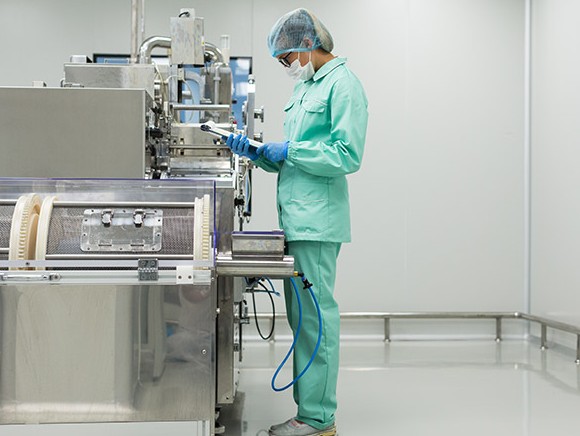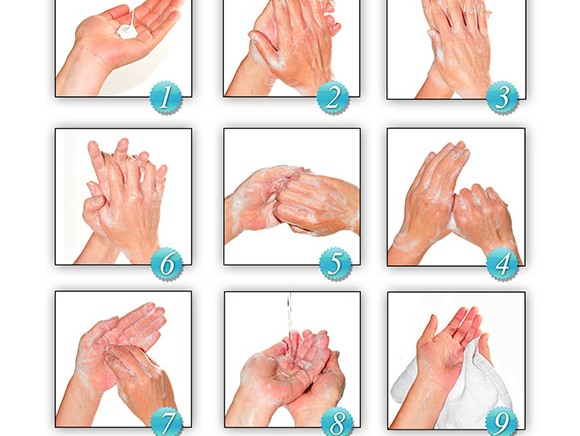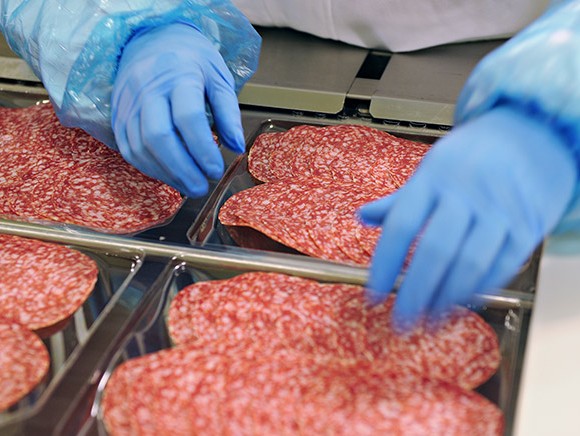
Customers and governments alike are imposing ever-stricter microbiological requirements on food. Therefore, although cost-intensive, it is definitely advisable to use a high-care area when working with higher-risk food products.
High-risk production areas are subject to very stringent requirements in terms of design, equipment, product flow, cleaning and personal hygiene. Generally, these areas are only built and designed for processes in which microbiological (re)contamination of the product would have very severe (financial) consequences. Examples of processes that should preferably be performed under high-care conditions are, for instance, the preparation and packing of ready-to-eat products such as sandwiches and fresh-cut fruit and vegetables. This increases the microbiological safety of the end products entering the market.
‘High-care’ is focused on minimising microbiological product contamination. ‘High-risk’ is aimed at preventing products becoming contaminated by microorganisms. According to British Retail Consortium (BRC) standards, high-risk areas are designed in line with the highest hygiene level and products may only enter the area after they have had a minimum of a 6-log reduction in Listeria. ‘Clean-room’ technology means that the area is designed in such a way as to avoid the presence of airborne contaminants, because these often contain microorganisms. Clean-room technology plays a major role in the design of high-care and high-risk areas.
Reasons to decide to set up a high-care or high-risk area include:
Demonstrable improvement of the microbiological condition of the product and hence a possible extension of the shelf life;
To launch products on the market containing fewer additives and preservatives;
To prevent product recalls;
Meet the stricter microbial requirements on the part of customers and/or Governmental authorities.

By briefly heating a food product after it has been packaged (post-pasteurisation), it is possible to reduce the effect of possible post-contamination. The extent of this reduction depends on the type of product and the intensity with which it is heated (e.g. 3 minutes at 90°C). This method provides a high degree of product safety but is not suitable for every type of product. Post-pasteurisation can negatively affect the quality of some products, such as boiled ham or cured meat. In order to apply this method, it may be necessary to adapt the product formulation or even completely redevelop the product, such as by improving the moisture-retention properties of cooked or cured meat.
Another way to prevent post-contamination is to pack the products in a high-care area. This is a technically more complex solution than post-pasteurisation and it also involves high investment costs in equipment and process management. The big advantage is that it does not affect the product quality. However, there is still a risk of recontamination if hygiene protocols are not adhered to.
The principle design of high-risk and high-care areas comprises four parts: the workspace, segregated employee access to/from it, access for goods in, and access for goods out. In the design of different types of hygienic areas, the primary focus is often on these construction aspects and the technical facilities. Needless to say, all of these things must be in perfect order. However, a common pitfall is thinking that the hygiene is now guaranteed and the end products are bacteria-free. In actual fact, it is not possible to sit back and relax because there are other aspects that play a role in safeguarding hygiene too.
The following so-called ‘9 Ms’ are equally important, if not more so: Man, Machine, Method, Materials, Marketing, Microbiology, Management, Mother Nature (environmental conditions) and Money. Of these, the human factor (‘Man’) is particularly crucial; if the employees are not 100% committed to the high-care mindset, there will be hygiene failings. Therefore, it is wise to begin training employees during the preparation and construction phase of hygienic areas in order to secure stronger engagement. An accepted level of social control will then ensure that everyone adheres to the rules and requirements. Creating these conditions makes all the difference.
Start by forming a multidisciplinary team that closely guides the construction, installation and implementation of the high-care areas. First of all, a workgroup conducts a risk assessment (HACCP design). This will reveal the location of the so-called design control points in the process so that these can be taken into account during the design and construction work. Examples include the hygienic and cleaning aspects of the area from an architectural perspective, the drainage of cleaning water, the logistical movement of goods and people, and the air flow.
For instance, the following aspects are part of an integrated total approach:
The design of the buildings and spaces (architectural);
Making the necessary arrangements for the internal logistics (routing/access procedure);
Decision about the air treatment system required;
Choice of the right equipment, specific clothing and other requirements;
Recruitment and training of employees;
Development of an adapted cleaning procedure;
Arrangement of communication to and from the high-care area.
(See, for example, the BRC publication ‘Understanding High Risk and High Care’)
In high-care areas for food production, the only way to assess the quality of the process is by testing the microbiological contamination level of the products. Take air samples, for example, using various types of agar for the different groups of microorganisms. The microorganism levels are represented in colony-forming units (CFUs) per surface area or per m³. The air quality can be measured using an optical particle counter. A standard measurement in line with Federal Standard 209 counts the number of particles between 0.5 and 5μm in one cubic foot (28.3 litres) for a minute long. Bear in mind that the number of particles is not exactly equivalent to the number of microorganisms.

Careful cleaning and disinfection is fundamental in every food production process. To assess the cleaning and disinfection of a high-care area, take microbiological samples of equipment and surfaces that come into contact with the product, both before work commences and after the disinfection agent has been rinsed off. It is also possible to gain insight into the hygiene in the high-care area by monitoring the residual microbiological contamination in drains. Take samples of process and surfaces at different times during the process in order to discover specific sources of contamination. You can use standard swab samples for this.
When taking microbiological samples from employees, the most important places are ones that come into contact with the product, such as clothing and gloves. You should also take surface samples from the end products to evaluate the effect of your current hygiene measures on the degree of contamination.
Source: Foto machine: ©TRAIMAK/Shutterstock.com, foto hygiëne: ©Oscar Moncho/Shutterstock.com, foto vlees: © pirtuss/Shutterstock.com